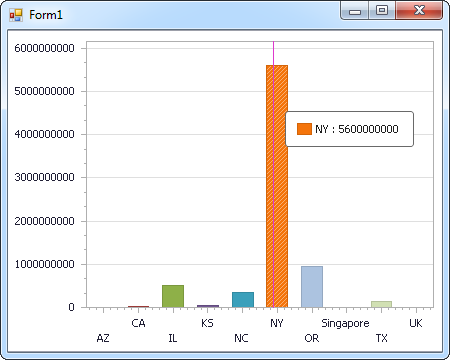Discover how a bimodal integration strategy can address the major data management challenges facing your organization today.
Get the Report →DataBind Oracle Eloqua Data to the DevExpress Data Grid
Use the CData ADO.NET Provider for Oracle Eloqua with the DevExpress Windows Forms and Web controls to provide Oracle Eloqua data to a chart.
The ADO.NET Provider for Oracle Eloqua by CData incorporates conventional ADO.NET data access components compatible with third-party controls. You can adhere to the standard ADO.NET data binding procedures to establish two-way access to real-time data through UI controls. This article will demonstrate the utilization of CData components for data binding with DevExpress UI Controls (Windows Forms and Web controls), specifically binding to a chart that visualizes live data.
There are two authentication methods available for connecting to Oracle Eloqua: Login and OAuth. The Login method requires you to have the Company, User, and Password of the user.
If you do not have access to the username and password or do not wish to require them, you can use OAuth authentication. OAuth is better suited for allowing other users to access their own data. Using login credentials is better suited for accessing your own data.
Windows Forms Controls
The code below shows how to populate a DevExpress chart with Oracle Eloqua data. The OracleEloquaDataAdapter binds to the Series property of the chart control. The Diagram property of the control defines the x- and y-axes as the column names.
using (OracleEloquaConnection connection = new OracleEloquaConnection(
"User=user;Password=password;Company=CData;")) {
OracleEloquaDataAdapter dataAdapter = new OracleEloquaDataAdapter(
"SELECT Name, ActualCost FROM Campaign", connection);
DataTable table = new DataTable();
dataAdapter.Fill(table);
DevExpress.XtraCharts.Series series = new DevExpress.XtraCharts.Series();
chartControl1.Series.Add(series);
series.DataSource = table;
series.ValueDataMembers.AddRange(new string[] { "ActualCost" });
series.ArgumentScaleType = DevExpress.XtraCharts.ScaleType.Qualitative;
series.ArgumentDataMember = "Name";
series.ValueScaleType = DevExpress.XtraCharts.ScaleType.Numerical;
chartControl1.Legend.Visibility = DevExpress.Utils.DefaultBoolean.False;
((DevExpress.XtraCharts.SideBySideBarSeriesView)series.View).ColorEach = true;
}

Web Controls
The code below shows how to populate a DevExpress Web control with Oracle Eloqua data. The OracleEloquaDataAdapter binds to the Series property of the chart; the Diagram property defines the x- and y-axes as the column names.
using DevExpress.XtraCharts;
using (OracleEloquaConnection connection = new OracleEloquaConnection(
"User=user;Password=password;Company=CData;"))
{
OracleEloquaDataAdapter OracleEloquaDataAdapter1 = new OracleEloquaDataAdapter("SELECT Name, ActualCost FROM Campaign", connection);
DataTable table = new DataTable();
OracleEloquaDataAdapter1.Fill(table);
DevExpress.XtraCharts.Series series = new Series("Series1", ViewType.Bar);
WebChartControl1.Series.Add(series);
series.DataSource = table;
series.ValueDataMembers.AddRange(new string[] { "ActualCost" });
series.ArgumentScaleType = ScaleType.Qualitative;
series.ArgumentDataMember = "Name";
series.ValueScaleType = ScaleType.Numerical;
((DevExpress.XtraCharts.SideBySideBarSeriesView)series.View).ColorEach = true;
}







